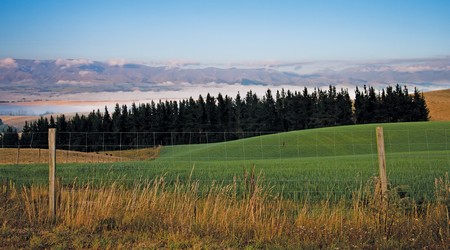Are small forest blocks viable?

Most small forests were planted in the 1990s, and now that they are coming to maturity they have the potential to supply most of the large increase in wood availability over the next decade.
However, some small forests have been poorly managed and, when this is combined with a poor location, it can be uneconomic to harvest the trees. Financial losses and factors such as road damage and concerns about road safety due to logging trucks has contributed to an anti-forestry sentiment in some districts.
This needs to be rectified because small forest growers have a strong influence on the public perception of forestry as an investment and thus on whether reforestation and new forest planting occurs.
Enlarging New Zealand’s planted forest area to secure long-term log supply, support regional economies and help New Zealand achieve its goals for climate change and fresh water quality is therefore dependent to a good degree on how small forest owners fare over the next decade.
A report on future wood availability compiled recently for the Ministry for Primary Industries has shed light on the number of small forest blocks (in this study those up to 40 hectares) expected to be harvested, and the probability these blocks will be replanted.
The study indicated that more than 91% of these small forests will be harvested. As expected, the terrain of the forest block, access to roading and distance to a port or mill had a strong influence on forest profitability.
The report’s authors, Barbara Hock, Duncan Harrison and Richard Yao, used large national datasets that map existing forests, and their location, size and age, to determine the forests that are most likely going to be harvested and estimate the probably that they will be replanted. By applying these data to Scion’s Forest Investment Finder (FIF) economic model, the research team was able to establish the costs associated with planting, silviculture, roading, felling and terrain, transport and log yields, and a log price for individual small forest blocks.
Small forests do not have the economies of scale available to them that large forests have so it was encouraging that the modelling indicated only about 6-9% of small forest blocks would be uneconomic to harvest. These blocks are spread around the country and, mostly due to remoteness, may not be harvested at all. Pruning regime had little effect on intention to harvest. A 5% or 10% increase in log price increased the percentage of forests that becomes economic to harvest by 2.1% and 3.4% respectively.
Working with nearby forest owners to coordinate harvesting and share some costs can help too.
The effect of improved carbon prices is complex and forest specific. While a higher carbon price can improve cashflow for an ETS-qualifying forest during the growing phase, the carbon liability associated with harvesting needs to be repaid. In some circumstances, a high carbon price could make retaining the forest more economical than harvesting it.
Based on trends over the past 20 years, and taking into consideration data such as location, slope, catchment, proximity to other land uses and industry, and people density, lead author Barbara Hock says there are no real surprises.
“The small blocks of forest least likely to be replanted are those near larger urban areas, situated on lower slopes and where there is strong competition with other land uses such as in the Waikato and Canterbury”.
For further information on Scion’s work with small forest growers
contact Tara Strand
